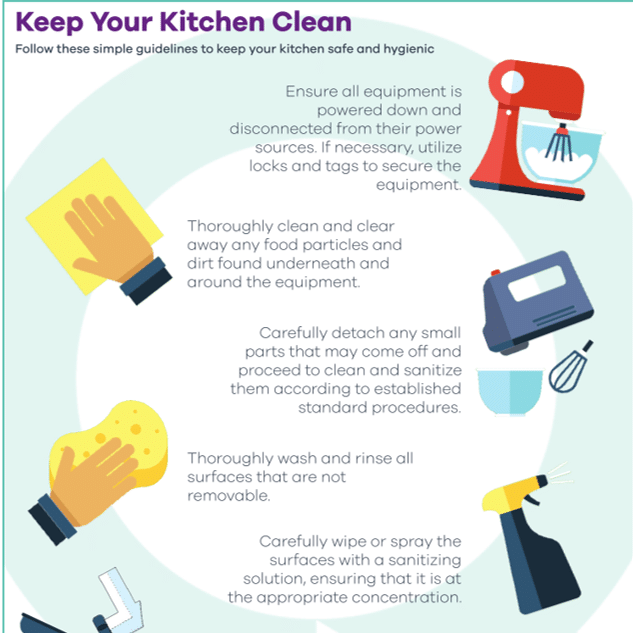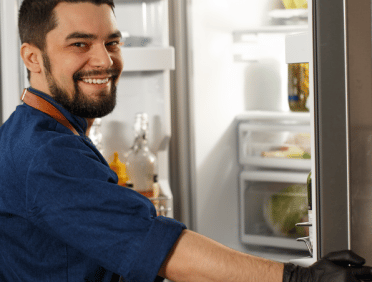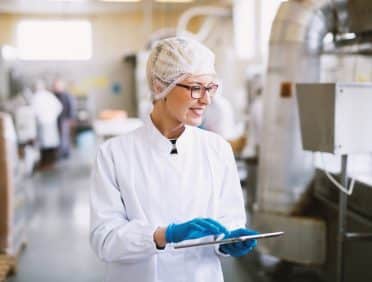Proper cleaning of a kitchen in a food business at the end of the day is essential for several reasons:
- Food safety: Cleaning and sanitising the kitchen equipment and surfaces helps eliminate foodborne pathogens, bacteria, and other contaminants that can cause foodborne illnesses. This reduces the risk of cross-contamination and ensures the safety of the food prepared in the kitchen.
- Compliance with regulations: Food businesses are often required to adhere to strict hygiene and sanitation regulations set by local health authorities. Proper cleaning practices ensure compliance with these regulations, preventing potential penalties or closure of the establishment.
- Maintaining equipment efficiency: Regular cleaning and maintenance help prolong the lifespan of kitchen equipment. Removing food particles, grease, and dirt prevents the buildup of residue that can affect the performance and functionality of the equipment. This reduces the need for frequent repairs or replacements, saving costs for the business.
- Positive customer perception: A clean and well-maintained kitchen reflects positively on the overall reputation of the food business. Customers are more likely to trust and patronise establishments that prioritise cleanliness and hygiene. It enhances the dining experience and promotes customer satisfaction.
A Summary of the steps for proper end-of-day kitchen cleaning in a food business can be found on our FREE Kitchen Cleaning Poster which can be downloaded by clicking here, and includes a fantastic visual reminder of the following steps for you to put up in your workspace:
- Power down and secure equipment: Ensure all equipment is turned off and disconnected from power sources. Use locks and tags to secure the equipment if necessary.
- Clear away debris: Thoroughly clean and remove any food particles and dirt found underneath and around the equipment.
- Clean and sanitise detachable parts: Carefully detach small parts and clean and sanitise them according to established standard procedures.
- Wash and rinse surfaces: Thoroughly wash and rinse all non-removable surfaces using suitable cleaning agents and water.
- Sanitise surfaces: Carefully wipe or spray surfaces with a sanitising solution at the appropriate concentration to effectively kill bacteria and other pathogens.
- Air dry: Allow all parts to air dry completely to prevent moisture buildup and bacterial growth.
Reassemble equipment: Reassemble the equipment following the manufacturer’s instructions or established procedures.
- Re-sanitize touched surfaces: Lastly, re-sanitize any surfaces that were touched during the reassembly process, including knobs, handles, switches, etc.
By following these steps, a food business can ensure a clean and hygienic kitchen environment, promote food safety, comply with regulations, and maintain the efficiency and reputation of the establishment.
o download a .pdf of this blog, please click here













